Bow Paving Solves Problematic Driveways with Simple Scarifier
BY John Ball
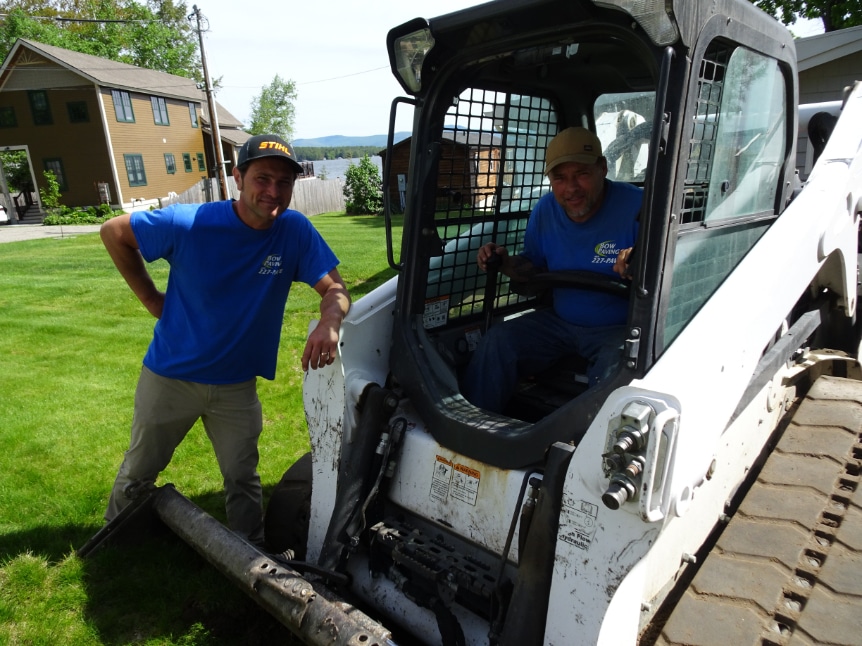
Sometimes you can’t pull a great big piece of heavy equipment into a residential neighborhood to rip out an older, cracked driveway. For whatever reason, it won’t fit or it weighs more than the residential zoning will allow or what have you. While I was working with the crew at Bow Paving, Bow, New Hampshire, spring 2022, they brought a new attachment from Jenkins Iron and Steel, Long Prairie, Minnesota, to a pair of projects one day, and made quick work of preparing the subbase of two driveways. Let’s take a look at what they did and how your crew can learn from their work.
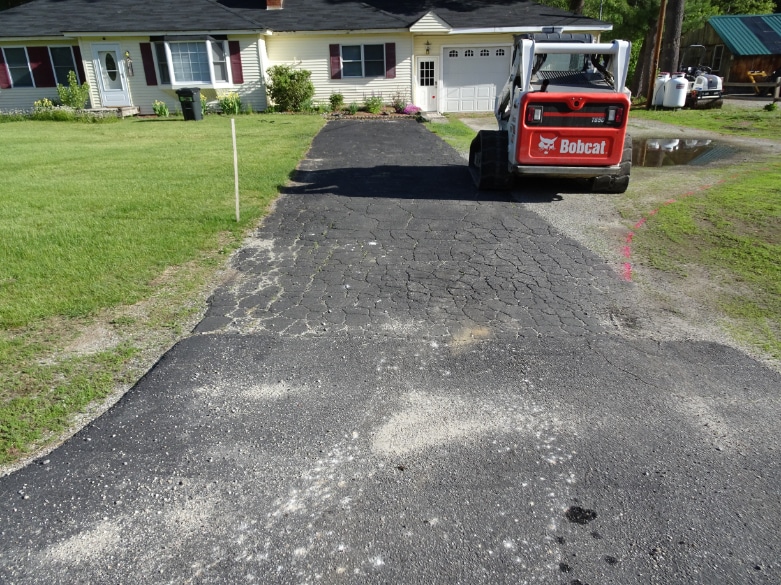
The second project of the day required replacement of old, alligatored pavement and installation of a French drain to solve a water-retention problem before expanding and paving the new driveway for this family. You can see in this picture that the crew has already marked out where the curve of the driveway will need to be paved.
Robert Young Jr. is third-generation asphalt. He was driving truck for his father’s business, which was founded back in 1947, and started his own business in 2001. His company, Bow Paving, mainly handles driveways, parking lots and maintenance jobs.
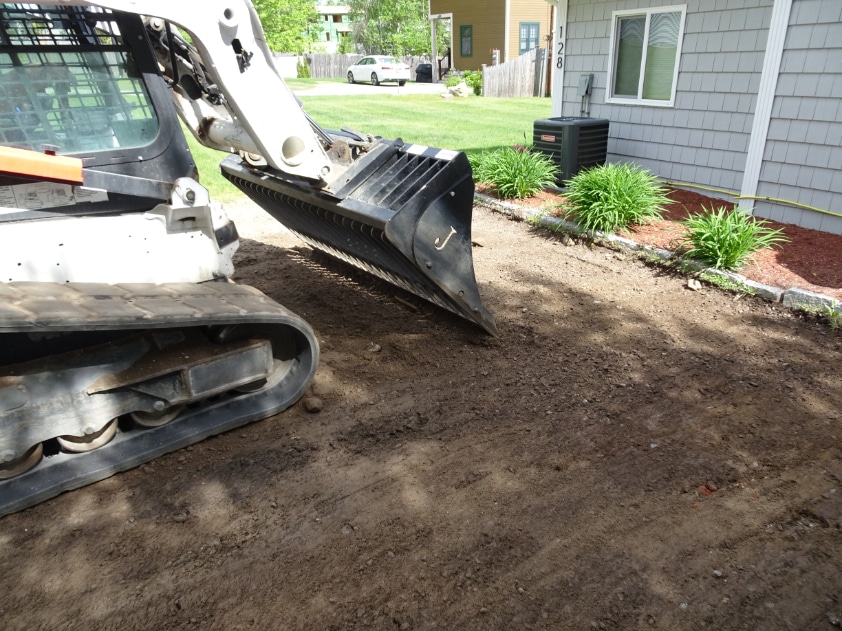
Backdragging helps to grade the subbase.
Young works out in the field with his crew and can make decisions or handle changes on site. For the two driveways we worked on last spring, having a decision-maker on site came in handy when a neighbor crossed the street and asked if we could handle a small project for them as well. Young was able to measure the extra job, estimate the cost, and add it to the day’s commitment of labor and equipment. That kind of flexibility is a bonus for contractors who can have a decision-maker in the field who understands what the crew can handle day in and day out, and what materials and labor cost the company day in and day out.
Driveway 1: Down to the Subgrade
For the first project in these pictures, you can see the team removed large chunks of asphalt from an older driveway with alligator cracking. They used a regular bucket attachment for the skid steer at first. When it came time to get the smaller chunks out of the subgrade, the operator, David Ordway, switched to the 78-inch scarifier attachment. They have a quick-release on their 7650 Bobcat, which makes the change from one tool to another easy for them.
This change to the scarifier attachment allowed him to break up the subgrade, sift out the larger chunks, and leave the sand and dirt in place. Ordway tipped the bucket up to use its lip for grading. The back-dragging functions as grading the subbase, making it nice and smooth before filling in and paving.
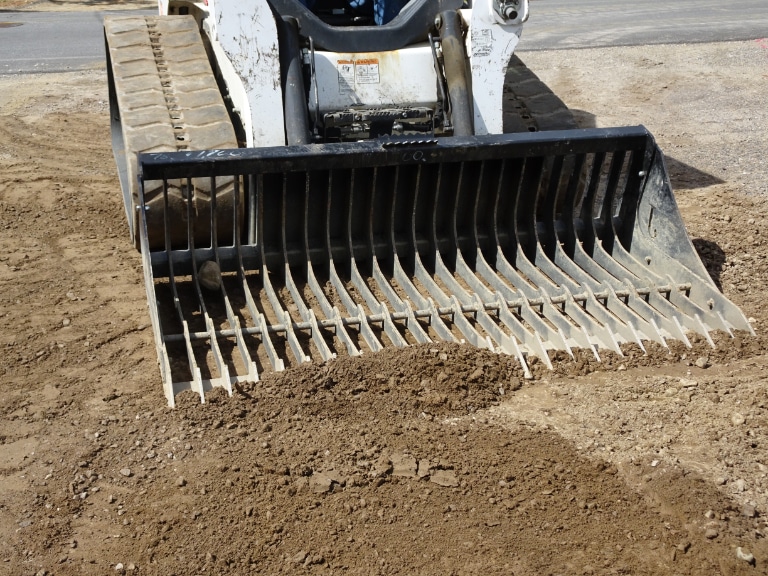
Here you can see the 78-inch scarifier attachment has caught a chunk of rock that would have otherwise contributed to problems in getting a smooth subbase.
Next, the crew put in 6 inches of crushed gravel with the regular bucket and leveled that off. Then they paved 2 inches of base and 2 inches of top hot mix with their 5-year-old Leeboy paver. Because that machine is 5 years old, it has some wear to address; they needed to replace the loose depth cranks and needed to get heated endgates to perfect their process. With these updates, they’re poised for success.
They compacted the driveway with their Ingersoll-Rand roller, which is an older piece of equipment for them. Up next, they’re purchasing a Cat CB27 roller with a seat that slides side to side to allow the operator better range of visibility.
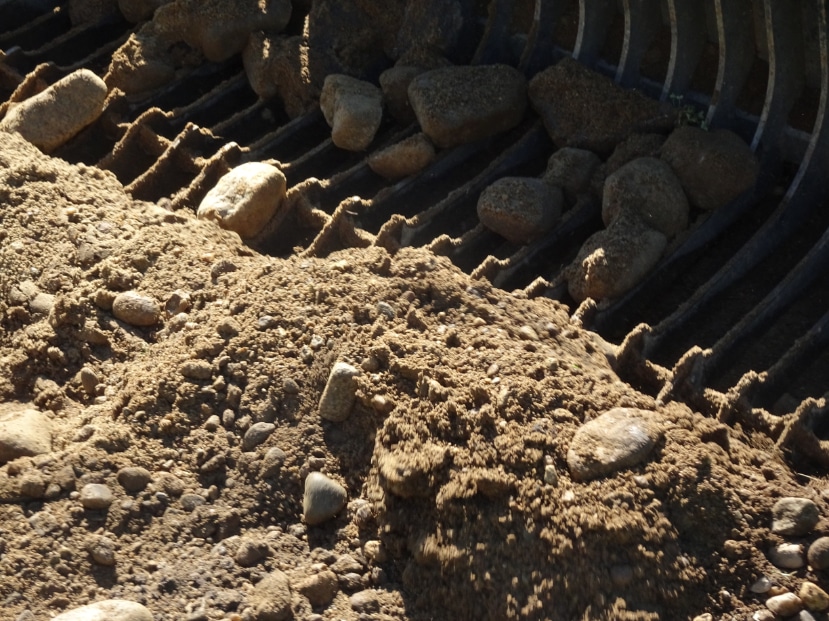
The rocks were coming up out of the subgrade like potatoes. Each one of these represents the potential for frost heave damage in the future, so the crew needs to get them sifted out.
Driveway 2: Expansion with Drainage
The second project in these pictures was more involved. You can see the team had a section of the project to sift and prepare with the scarifier attachment, again removing chunks and rocks so the subbase could be graded and smoothed for paving. This project required crushed gravel, placed with the regular bucket attachment, as the first project did.
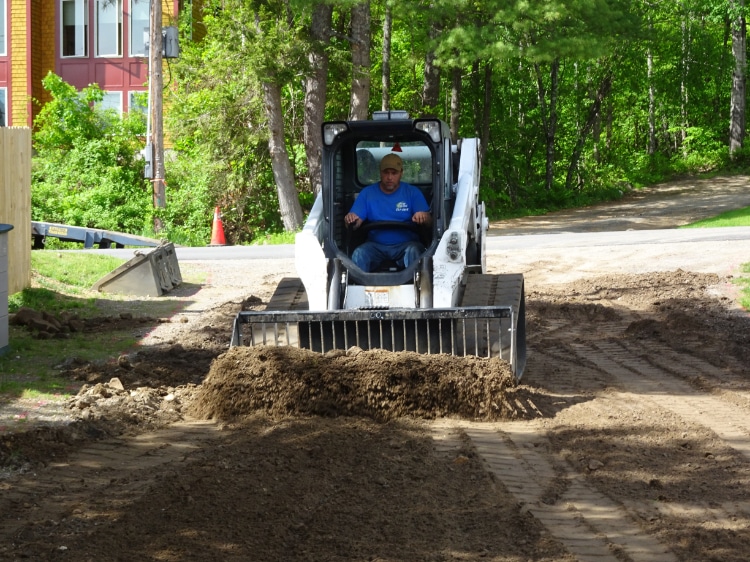
After sifting the larger chunks of asphalt and stone, the sand will be left for smoothing into the subbase.
The section of the driveway on the right-hand side of these images needed a French drain installed with Petromat to solve a water retention problem. Young uses a Topcon laser for measuring to know exactly how much material to order and place.
The team lined out the job before they started paving and noted the tonnage for each pass. This is critical and is how they control their yield.
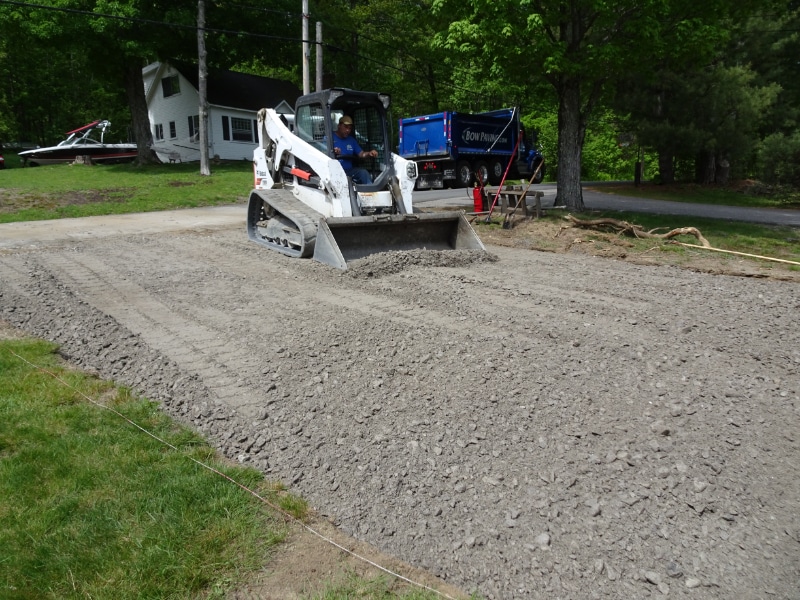
The crew put in 6 inches of crushed gravel with the regular bucket and leveled it off.
For this project, they created five passes to get the flares even. Check out the “final result” picture. The first pass is 12 feet wide and comes down about 100 feet. The next is 14 feet wide and comes down about 100 feet to match the first. Then they set the paver over at the “end” of those passes to pave across the front and create the flare. The fourth pass began against that horizontal “lane” and pulled down to the road. The final pass was set up against the short stone wall next to the house and pulled all the way down to the road.

Quality comes from attention to details like wearing special tamp shoes and sealing the edges with a plate compactor.
Notice they sawcut the unsupported edge. While this makes for a pretty edge, it also serves a quality purpose. It removes the potential for pavement raveling.
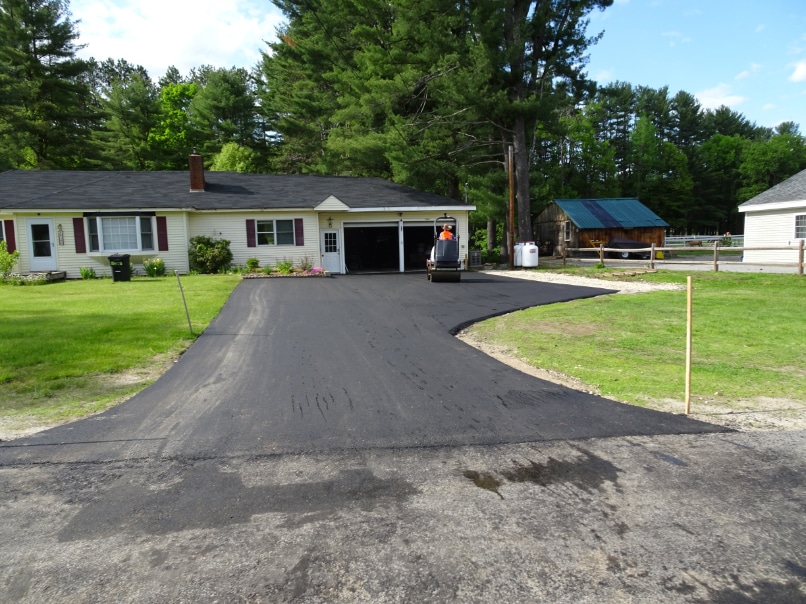
The final result shows a gorgeous, finished driveway with even flares and a sawcut edge to prevent potential raveling.
Other quality touches come from the team using a 2 by 4 to ensure the roller gets on and off the mat without crushing and crumbling the edge, using a plate compactor to seal edges, using rounded and squared tamp shoes for sealing up the edges against different structures, and having the truck driver use the leaf blower to keep the site clean during work. No one on the crew has time to sit around when it’s a small operation working hard to impress the client and build a top quality pavement.
John Ball is the proprietor of Top Quality Paving & Training, Manchester, New Hampshire. He provides personal, on-site paving consulting services around the United States and into Canada. For more information, contact him at (603) 493-1458 or tqpaving@yahoo.com.
